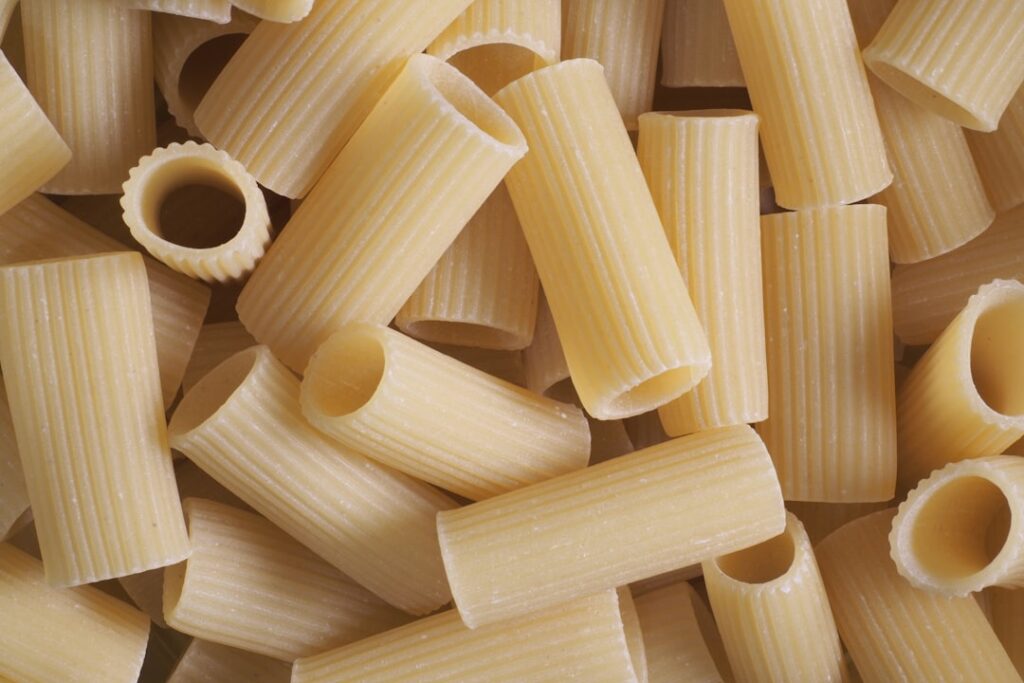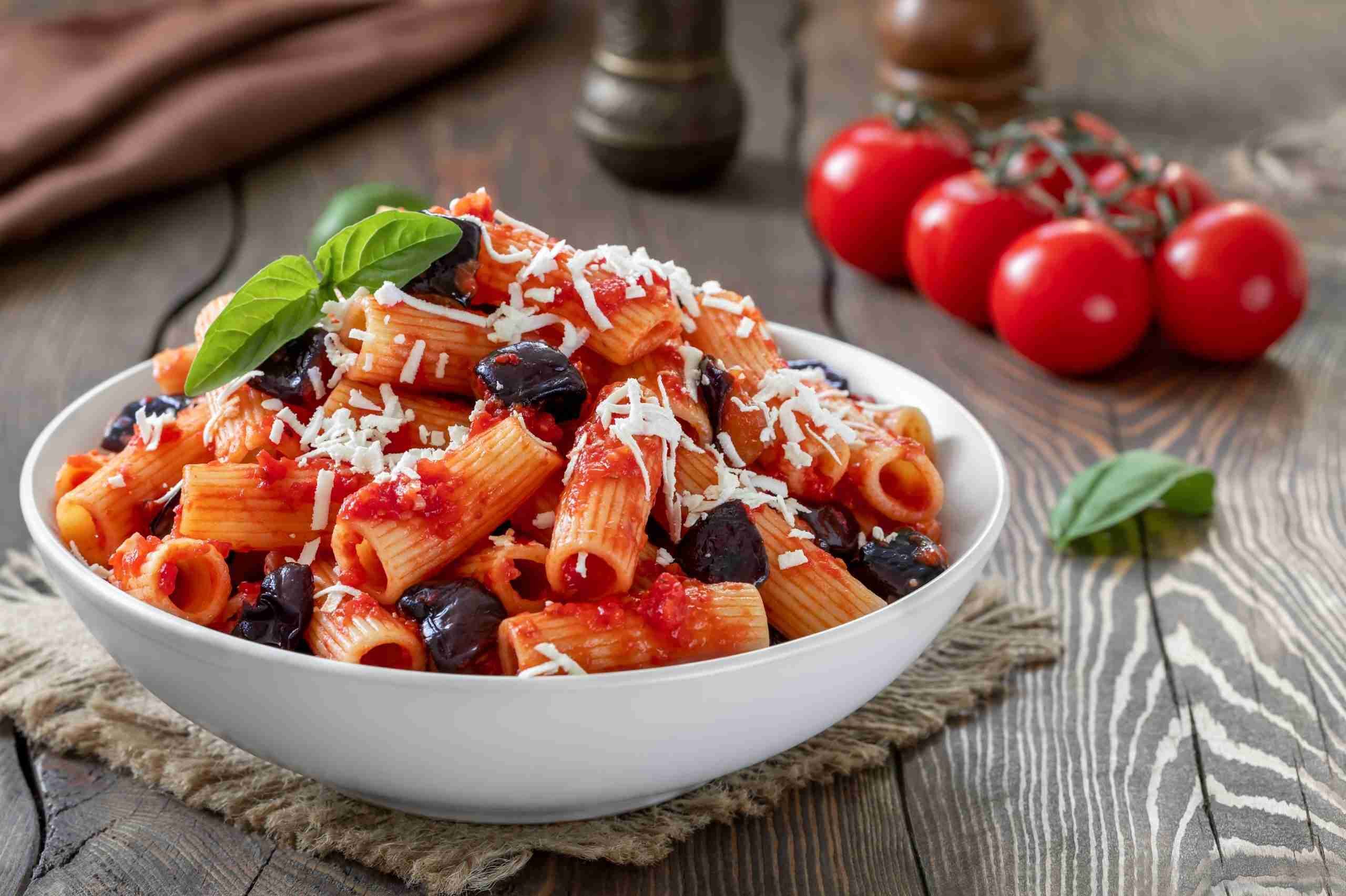When it comes to Italian cuisine, few pasta shapes are as satisfying and versatile as rigatoni. Recognized for its large, ridged, tube-like structure, rigatoni is more than just another type of pasta—it’s a culinary tool that enhances sauces, adds texture to dishes, and brings traditional Italian meals to life. Rigatoni comes from the Italian word “rigare,” meaning “to ridge,” which is fitting since the pasta’s grooves are designed to hold thick sauces exceptionally well.
Rigatoni is believed to have originated in central and southern Italy, particularly in regions like Sicily and Campania. Unlike smoother pasta types like penne lisce (smooth penne), rigatoni is loved for its ridged exterior and open ends, which trap sauces, cheeses, and small meat bits, creating an explosion of flavor in every bite.
This pasta is ideal for baked dishes, often layered with robust meat sauces and creamy cheeses in oven-baked casseroles. It’s also a staple in many Italian-American households and is used in everything from Sunday dinners to holiday feasts.
Cooking and Serving Rigatoni: From Tradition to Innovation
One of the best things about rigatoni is how flexible it is in the kitchen. Whether you’re making a classic rigatoni alla norma with eggplant and tomato sauce, or a hearty rigatoni al forno baked with béchamel and ground beef, the shape and texture of the pasta make it perfect for bold flavors and thick sauces.
Tips for Cooking Perfect Rigatoni:
- Boil in Salted Water: Always cook rigatoni in well-salted boiling water. The salt enhances the flavor of the pasta itself.
- Al Dente Texture: Rigatoni should be cooked al dente, which means it still has a bit of firmness when bitten. Overcooking leads to a mushy texture that doesn’t hold sauce as well.
- Sauce Pairing: Use chunky sauces. Tomato-based sauces, meat ragùs, or even cheesy cream sauces adhere better due to the ridges.
Popular Rigatoni Dishes:
- Rigatoni alla Vodka: A creamy tomato-based sauce with a splash of vodka, often finished with parmesan and basil.
- Rigatoni with Sausage and Broccoli Rabe: A spicy, savory combination that balances the bitterness of broccoli rabe with the fat of Italian sausage.
- Rigatoni al Forno: A baked rigatoni casserole layered with meat, ricotta, mozzarella, and marinara—similar to a lasagna but with tube pasta.
- Vegetarian Rigatoni Primavera: Packed with fresh vegetables and garlic olive oil, ideal for lighter meals.
Rigatoni isn’t limited to traditional recipes either. Innovative chefs and home cooks are now using rigatoni in fusion dishes like Mexican rigatoni bake or even Asian-inspired stir-fried rigatoni with soy and ginger sauces. The pasta’s durability makes it an excellent base for experimentation.
Nutritional Value and Dietary Options
Rigatoni, like other pasta types, is made primarily from durum wheat semolina, which gives it a high protein content and firm structure. A 2-ounce serving of dry rigatoni contains approximately:
- Calories: 200–220
- Protein: 7–8 grams
- Carbohydrates: 42–45 grams
- Fiber: 2–3 grams
- Fat: 1 gram or less
For those following a specific diet, there are many alternatives available:
- Whole Wheat Rigatonis: Higher in fiber and nutrients.
- Gluten-Free Rigatonis: Made from rice, corn, or chickpea flour for gluten-intolerant individuals.
- Vegan-Friendly: Most rigatoni is naturally vegan, but always check the ingredients to be sure.
Pair rigatonis with vegetables, lean meats, or legumes to create a well-balanced meal that is both satisfying and nutritious.
Why Rigatonis Stands Out Among Pasta Shapes

What makes rigatonis unique is its ability to deliver a rich, saucy, and balanced mouthfeel. Unlike thin pastas such as spaghetti or angel hair, rigatonis offers more “bite,” which means it provides both texture and satisfaction. Its design is not just for appearance—it plays a functional role in enhancing the dining experience.
Because the pasta is sturdy, it’s ideal for meal prepping and leftovers, as it doesn’t become soggy as quickly as other pasta types. It also reheats well, making it perfect for batch-cooked meals during the week.
Final Thoughts: Why Rigatonis Should Be a Pantry Staple
Rigatonis is more than just pasta—it’s a symbol of Italian culinary tradition, a canvas for delicious sauces, and a reliable choice for both casual and gourmet meals. Whether you’re a seasoned cook or just starting your pasta journey, adding rigatonis to your pantry opens the door to a world of flavorful possibilities.
From its rustic roots to modern-day reinventions, rigatonis continues to prove that shape and texture matter in pasta-making. So next time you’re at the store, reach for a box of rigatonis—you’ll be glad you did.
